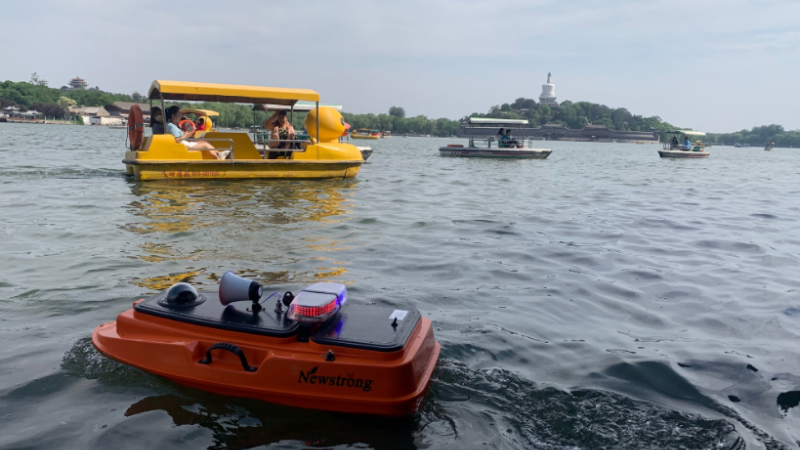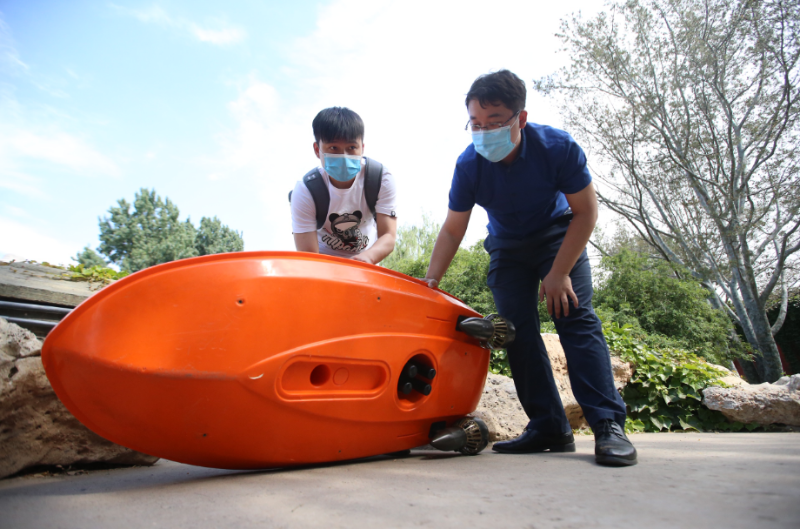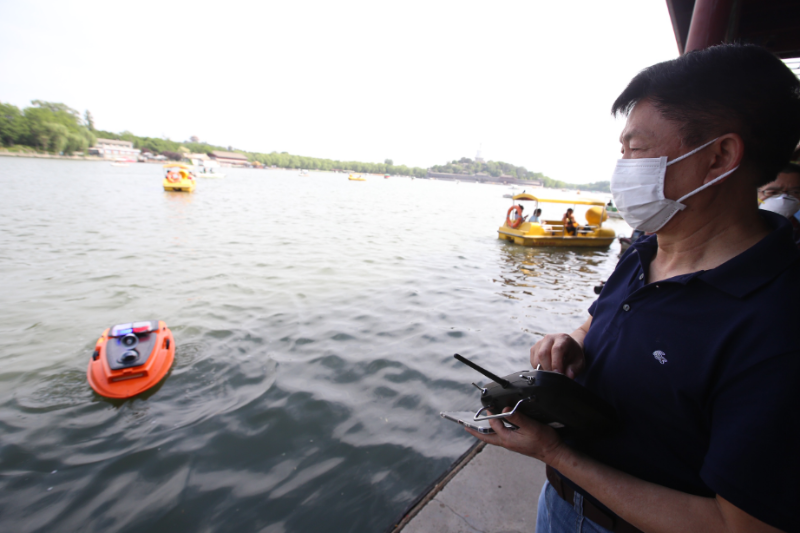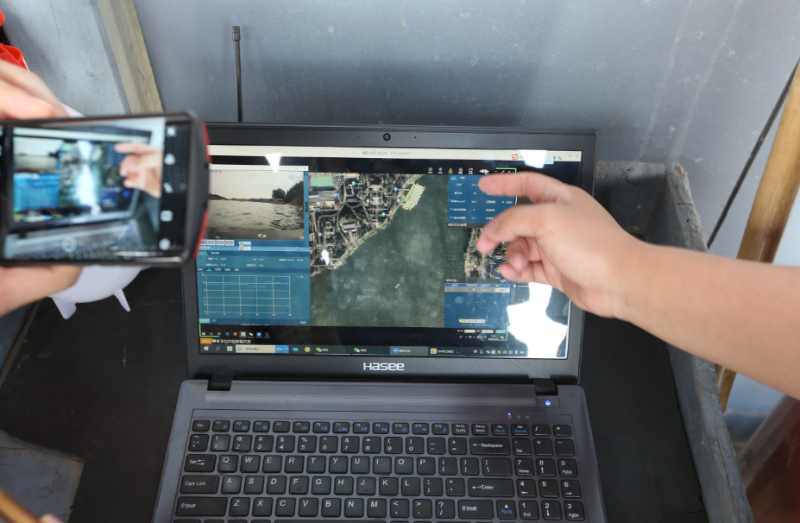An orange unmanned boat with 5G wireless technology went for its first test "sailing" in Beihai Park, in Beijing, May 20, 2020. The unmanned boat shuttled in the waters of Beihai Park to collect data on water quality and the surrounding environment. According to Xicheng District Urban Management Committee, it was the first time conducting water monitoring using an intelligent remote device. And the method will be applied to other rivers and lakes in Beijing in the future.

The 5G-assisted unmanned boat is monitoring water quality in Beihai Park, Beijing. /BeijngDaily Photo
The 5G-assisted unmanned boat is monitoring water quality in Beihai Park, Beijing. /BeijngDaily Photo
In the past, monitoring water quality relied mainly on samples the staff took onsite. The samples were brought to the laboratory for tests.
Sensor equipment was installed at fixed points to monitor water quality in real-time. However, some water areas have complex terrain and hidden drains, creating many inconveniences when it comes to retrieving samples or evidence of occupation or illegal construction near the river channels. Sometimes the collected water sample didn't meet the requirements, so monitoring efficiency was very low.

Difficulties of monitoring water quality in the past are solved by this 5G unmanned boat. /BeijngDaily Photo
Difficulties of monitoring water quality in the past are solved by this 5G unmanned boat. /BeijngDaily Photo
The 5G unmanned boat is meant to solve these problems. The 1.2-meter-long boat is equipped with high-definition cameras and a water quality sensor, which can transmit real-time data to a monitoring platform through the 5G network. The camera could capture the water environment in areas where are inaccessible to human eyes and the small speaker installed on the hull could convey pre-recorded messages to people around.
The bottom of the ship is equipped with a water quality monitor, and real-time monitored water quality data will be synchronously transmitted to the platform.
"The application of unmanned boats has achieved a leap from monitoring the water quality at a fixed point to monitoring the whole water area on the move."
The staff of the unmanned boat developer company added that the boat "can work up to six hours after charging for two hours."

The staff is remotely controlling the unmanned boat for a test in Beihai Park. /BeijngDaily Photo
The staff is remotely controlling the unmanned boat for a test in Beihai Park. /BeijngDaily Photo
Patrol routes can be set in advance, and routes can also be modified in real time. If the river environment is complicated with other ships, such as the lake in Beihai Park, the boat can be remotely controlled by the staff. The radar helps the boat avoid obstacles during patrol.
Every 15 seconds, the monitored data on five water quality parameters, including pH value, conductivity, dissolved oxygen, turbidity, and temperature, and video or images will be sent to the computer and a mobile phone.
The results on May 20 showed that the current water quality in Beihai Park is good.

Images and real time data can be received on both computer and mobile platforms. /BeijngDaily Photo
Images and real time data can be received on both computer and mobile platforms. /BeijngDaily Photo
After the first test patrol in Beihai Park, the unmanned boat will go on to do more water monitoring missions. Currently, there are two unmanned boats ready for use in nine rivers and 12 lakes in Beijing.